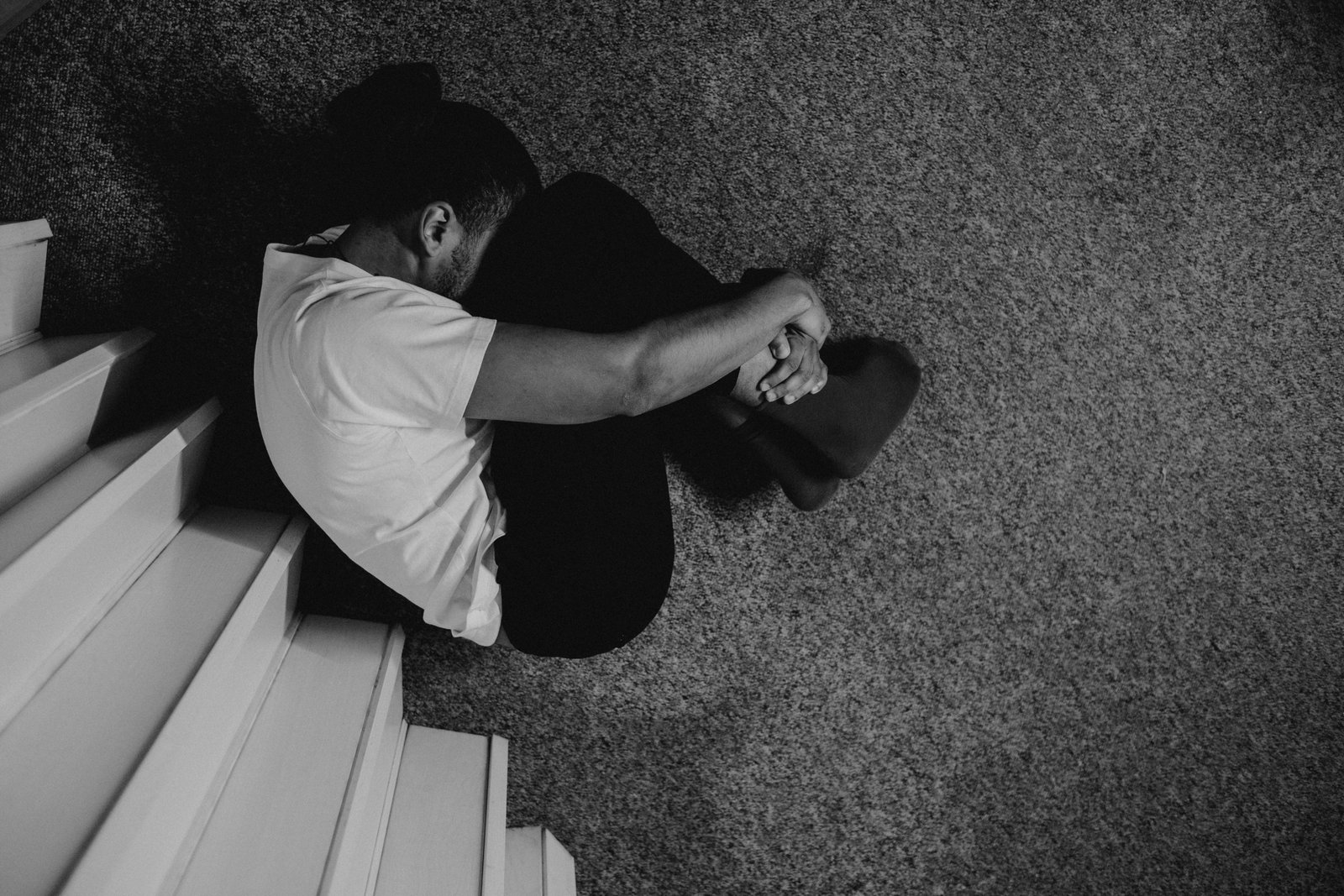
Agoraphobia is a complex and debilitating anxiety disorder that affects millions of people worldwide. Defined as the fear of being in situations or places where escape might be difficult or embarrassing, agoraphobia can profoundly impact a person’s quality of life. In this article, we will delve into the meaning and impact of agoraphobia, shedding light on the underlying causes, symptoms, and treatments. By gaining a deeper understanding of this often-misunderstood condition, we hope to raise awareness and support those affected. Join us as we unravel the complexities of agoraphobia, exploring the challenges individuals face with this anxiety disorder and the potential solutions available to help them regain control of their lives. Whether you’re struggling with agoraphobia or simply seeking to broaden your knowledge of mental health, this article will serve as an invaluable resource for all.
What is Agoraphobia?
Agoraphobia is an anxiety disorder characterized by an intense fear of situations or places where escape may be difficult, such as crowded public spaces, open spaces, or being outside the home alone.
Individuals with agoraphobia often experience panic attacks or anxiety symptoms in these situations, leading to avoidance behaviour. The fear is not necessarily related to the specific place or situation but rather to the possibility of having a panic attack and being unable to escape or receive help. Agoraphobia can severely limit a person’s ability to engage in everyday activities, resulting in social isolation and a diminished quality of life.
Agoraphobia often develops as a response to panic disorder, where individuals experience recurrent panic attacks. The fear of having a panic attack in public places can lead to avoidance behaviour, as individuals try to prevent situations that trigger anxiety. Over time, this avoidance behaviour can escalate and become more generalized, resulting in agoraphobia. It’s important to note that agoraphobia can vary in severity, with some individuals being unable to leave their homes while others may still be able to go out but with significant distress.
The exact cause of agoraphobia is not fully understood, but it is believed to be a combination of genetic, environmental, and psychological factors. Individuals with a family history of anxiety disorders or panic disorder may be more predisposed to developing agoraphobia. Traumatic events, such as experiencing a panic attack in a specific location, can also contribute to the development of agoraphobia. Additionally, individuals with certain personality traits, such as being anxious or having a tendency to avoid situations, may be more susceptible to developing agoraphobia.
Symptoms of Agoraphobia
Both physical and psychological symptoms characterize Agoraphobia. Physical symptoms may include rapid heartbeat, shortness of breath, sweating, trembling, and dizziness. These symptoms are often associated with panic attacks, which individuals with agoraphobia may experience when faced with a feared situation or place. Psychological symptoms may include intense fear, a sense of impending doom, feeling trapped or helpless, and an overwhelming desire to escape.
The symptoms of agoraphobia can be debilitating and may interfere with a person’s ability to carry out daily activities. Individuals with agoraphobia may avoid situations or places they perceive as threatening, such as crowded areas, public transportation, or being far away from home. This avoidance behaviour can lead to social isolation, as individuals may withdraw from socializing or engaging in activities outside their comfort zone. Agoraphobia can also significantly impact an individual’s mental health, leading to feelings of depression, low self-esteem, and a loss of independence.
Causes of Agoraphobia
The exact causes of agoraphobia are not fully understood, but research suggests that genetic, environmental, and psychological factors contribute to its development. Individuals with a family history of anxiety disorders or panic disorder may be more prone to developing agoraphobia. This suggests a genetic predisposition to anxiety, although specific genes responsible for agoraphobia have not been identified.
Traumatic events, such as experiencing a panic attack in a specific location or being in a situation where escape was difficult, can also trigger the development of agoraphobia. These events create an association between the location or situation and the experience of intense fear, leading to avoidance behaviour. Over time, this avoidance behaviour can generalize and extend to other situations or places, resulting in agoraphobia.
Psychological factors, such as personality traits and cognitive biases, can also contribute to the development of agoraphobia. Individuals who tend to be anxious or have a negative outlook on life may be more susceptible to developing anxiety disorders, including agoraphobia. Cognitive biases, such as catastrophizing or overestimating the likelihood of a negative outcome, can further reinforce the fear and avoidance behaviour associated with agoraphobia.
Agoraphobia Statistics
Agoraphobia is a prevalent anxiety disorder that affects millions of people worldwide. According to the National Institute of Mental Health, approximately 1.7% of adults in the United States have agoraphobia at some point. Women are more likely than men to be diagnosed with agoraphobia, with a ratio of around 2:1. Agoraphobia typically develops in late adolescence or early adulthood. However, it can occur at any age.
The impact of agoraphobia on an individual’s life can vary, with some individuals experiencing mild symptoms that do not significantly interfere with their daily activities, while others may be unable to leave their homes or engage in social interactions. Agoraphobia can lead to decreased productivity, impaired relationships, and a diminished quality of life. It is essential to seek professional help if you or someone you know is experiencing symptoms of agoraphobia to receive appropriate diagnosis and treatment.
How Agoraphobia Affects Daily Life
Agoraphobia can profoundly impact a person’s daily life, limiting their ability to engage in activities and interact with others. Individuals with agoraphobia often experience intense anxiety or panic attacks when faced with situations or places they perceive as threatening. This fear can lead to avoidance behaviour, as individuals try to prevent or escape situations that trigger their anxiety.
As a result, individuals with agoraphobia may avoid leaving their homes altogether or restrict their activities to familiar and “safe” environments. This can lead to social isolation, as individuals may withdraw from socializing or participating in events outside their comfort zone. The fear of having a panic attack in public places can also make it challenging for individuals with agoraphobia to maintain employment or pursue educational opportunities.
Agoraphobia can also impact relationships, as individuals may struggle to meet social obligations or participate in family activities. Loved ones may find it difficult to understand the fear and avoidance behaviour associated with agoraphobia, leading to strained relationships and feelings of frustration or helplessness. The constant fear and anxiety can also take a toll on an individual’s mental health, leading to feelings of depression, low self-esteem, and a loss of independence.
Treatment Options for Agoraphobia
Fortunately, there are effective treatment options available for individuals with agoraphobia. The most common approach to treating agoraphobia is a combination of psychotherapy and medication. Cognitive-behavioural therapy (CBT) is often recommended as the first-line treatment for agoraphobia. CBT helps individuals identify and change negative thoughts and behaviours associated with fear and avoidance. Exposure therapy, a specific form of CBT, gradually exposes individuals to feared situations or places in a controlled and supportive environment, allowing them to confront their fears and learn new coping strategies.
Medication can also be prescribed to help manage the symptoms of agoraphobia. Selective serotonin reuptake inhibitors (SSRIs) and benzodiazepines are commonly prescribed medications for anxiety disorders, including agoraphobia. SSRIs increase serotonin levels in the brain, which can help regulate mood and reduce anxiety symptoms. Benzodiazepines are sedatives that can provide short-term relief from anxiety, but they are generally not recommended for long-term use due to the risk of dependence and side effects.
In addition to therapy and medication, lifestyle changes can play a significant role in managing agoraphobia. Regular exercise, healthy eating, and stress management techniques such as meditation or deep breathing exercises can help reduce anxiety symptoms. Working with a mental health professional to develop an individualized treatment plan that addresses each person’s specific needs and goals is important.
Overcoming Agoraphobia: Tips and Strategies
Overcoming agoraphobia is a gradual process that requires patience, persistence, and support. Here are some tips and strategies that can help individuals manage and overcome agoraphobia:
1. Seek professional help: It is essential to contact a mental health professional specialising in anxiety disorders. They can provide accurate diagnoses, develop a personalized treatment plan, and offer guidance and support throughout recovery.
2. Educate yourself: Learning about agoraphobia and its causes and symptoms can help demystify the condition and reduce fear and anxiety. Knowledge is power, and being well-informed can empower individuals to take control of their recovery journey.
3. Practice relaxation techniques: Relaxation techniques such as deep breathing exercises, progressive muscle relaxation, and mindfulness meditation can help reduce anxiety symptoms and promote a sense of calm. Regular practice of these techniques can also improve overall well-being.
4. Gradual exposure: Exposure therapy, under the guidance of a mental health professional, can gradually expose individuals to feared situations or places. Starting with less intimidating situations and gradually increasing the level of exposure can help individuals build confidence and overcome their fears.
5. Build a support network: Surrounding oneself with a supportive network of family, friends, or support groups can provide encouragement and understanding. Sharing experiences and coping strategies with others who have similar challenges can be immensely beneficial.
6. Set achievable goals: Setting small, achievable goals can help individuals gradually expand their comfort zone. Celebrating each milestone reached can boost motivation and confidence in overcoming agoraphobia.
Remember, recovery from agoraphobia is possible with the right support, treatment, and determination. Each person’s journey is unique, and it’s important to be patient with oneself and celebrate small victories along the way.
Support Groups and Resources for Agoraphobia
Finding support is essential to the recovery process for individuals with agoraphobia. Support groups provide a safe space for individuals to share their experiences, challenges, and successes with others who understand their struggles. Connecting with others who have overcome or are currently managing agoraphobia can provide encouragement, inspiration, and valuable coping strategies.
Online resources and websites dedicated to mental health, such as the Anxiety and Depression Association of America (ADAA) or the National Alliance on Mental Illness (NAMI), can also provide valuable information, resources, and support. These organizations often offer educational materials, online forums, and helplines to assist individuals in their journey towards recovery.
It’s important to remember that seeking support is not a sign of weakness but a courageous step towards regaining control of one’s life. There is strength in reaching out and connecting with others who can offer guidance, empathy, and hope.
Living With Agoraphobia: Personal Stories and Experiences
Living with agoraphobia can be a challenging and isolating experience, but individuals who have successfully managed their condition can offer hope and inspiration. Personal stories and experiences shared by those who have overcome agoraphobia can provide insight into the recovery process and serve as a source of motivation for others.
These personal stories often highlight individuals’ struggles, setbacks, and triumphs. From the initial recognition of their fears to the steps they took to confront and overcome them gradually, these stories showcase the resilience and determination of individuals with agoraphobia.
By sharing personal stories and experiences, individuals can help reduce the stigma surrounding agoraphobia and create a sense of community and understanding. They offer encouragement, practical advice, and a reminder that recovery is possible.
Frequently Asked Questions
How is agoraphobia treated?
Agoraphobia is typically treated with a type of psychotherapy called cognitive-behavioural therapy (CBT), which can help you understand and change the thoughts that lead to your condition. Medications, such as selective serotonin reuptake inhibitors (SSRIs) and benzodiazepines, might also be used.
Can agoraphobia be cured?
While agoraphobia can't always be cured, proper treatment can manage its symptoms. Many individuals with agoraphobia can lead normal lives with ongoing treatment and support.
What should I do if I think I have agoraphobia?
If you suspect you might have agoraphobia, seeking help from a healthcare professional is important. They can provide a diagnosis and guide you to appropriate treatment. Remember, it's never a sign of weakness to ask for help, and you don't have to face this alone.
Can I prevent agoraphobia?
While you may not be able to prevent agoraphobia, you may reduce its severity by seeking help early if you have panic or anxiety symptoms.
Conclusion: Breaking the Barriers of Agoraphobia
In conclusion, agoraphobia is a complex anxiety disorder that can profoundly impact an individual’s life. It is characterized by an intense fear of situations or places where escape may be difficult or embarrassing. Agoraphobia can lead to avoidance behaviour, social isolation, and a diminished quality of life.
Understanding the causes, symptoms, and treatment options for agoraphobia is crucial in providing support and effective interventions for those affected. Psychotherapy, medication, and lifestyle changes can all play a role in managing agoraphobia and helping individuals regain control of their lives.
By raising awareness, fostering empathy, and sharing personal stories of recovery, we can break down the barriers of agoraphobia and create a more inclusive and supportive society. Together, we can ensure that individuals with agoraphobia receive the understanding, compassion, and resources they need to live fulfilling lives.



